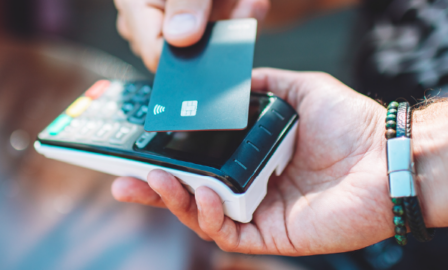Exploring Omnichannel Payment Gateways in Retail
“How would you like to pay for that?” seems like a straightforward question, but in today’s rapidly transforming landscape of payment methods, the answer isn’t always simple. The convergence of various payment modes, their integration into social media platforms, and the emergence of omnichannel banking have created a complex payment processing ecosystem. In this piece, our retail experts will explain what challenges different retailers are facing as well as key tips and tricks for omnichannel payment gateways in retail and how they can boost customer loyalty and personalization.
The Challenges
As retailers strive for a seamless customer experience across channels, the financial institutions that payment methodologies rely on stand as a pivotal element. However, several challenges arise for banks to keep pace with omnichannel projects – both from a timing and implementation standpoint as well as orchestrating secure and coherent customer data management across diverse channels.
One of the initial challenges when retailers wish to transition to a seamless multi-channel payment experience is the slow pace at which banks process data and perform testing transactions. The cautious, security-oriented nature of banks might impede the agility required for swift project implementations. Retailers must factor this in while charting realistic timelines for their payment processing upgrades.
Security challenges are also considerable given the intricate web of payment systems and integrations across vendors and third-party logistics providers. These convoluted layers elevate the risk of errors in mapping accounts systematically. Transactions originating from various touchpoints—social media apps, customer service, or physical stores—must be mapped across multiple systems, raising the likelihood of duplications or misallocated ledger entries.
For instance, consider a purchase made through a social media app—a transaction journey that involves processing through the payment capture processor, a middleware, an order management system, a fraud protection screening, an enterprise resource program, and finally, a secure bank file. At each step, the transaction interacts with different systems and teams, necessitating meticulous mapping and adherence to secure protocols and validations. The complexity of this process underscores the critical importance of robust security measures to safeguard against potential vulnerabilities.
Another scenario of significant complexity is return processes. Consider a customer who buys something online and later returns it in-store, wanting a refund distributed across different payment methods like a gift card and multiple credit cards. This process involves seamless coordination among the systems in the previous example, as well as sales audits, credit card processors, gift card processors, and secure bank files. Authentication processes for each card and bank, along with integration requirements, introduce a web of intricacies. Each step requires the smooth transfer of crucial data like authentication codes, encrypted card numbers, token IDs, and merchant IDs, tailored to different processors or vendors. Ensuring these interactions are well-coordinated is crucial for a hassle-free omnichannel returns process.
For expanding retailers integrating new brands, differing rules and regulations pertaining to authorizations across payment types, processors, and different countries, create complexities. Some providers may need to create net new applications to allow for a particular integration. Additionally, varying certification processes among providers complicate integration efforts, particularly in mergers where the parent company aims to replicate integration designs across brands.
The Solutions
To counter the vulnerability and risk inherent in a major payment system transition, thorough testing becomes imperative. It will be essential that teams collaborate to identify all the various payment scenarios and dedicate time to thoroughly test them and apply fixes. In order to safeguard the future customer experience, key business stakeholders and their technical counterparts will need to collaborate and scrutinize the myriad payment scenarios described above, taking into account multiple tender types and return processes.
For larger retailers with international operations and multiple brands, it will be important to vet critical third-party logistics providers and ensure they can provide the desired integrations for other critical teams and systems in your payment processing landscape. Identifying gaps in certifications across systems and understanding unique payment types, laws, or scenarios across countries is crucial initial research for smoother implementations in the future. The legal requirements for certification between providers can often be the most time-consuming but can easily be circumnavigated with advanced notice and strategic planning.
In Conclusion: Omnichannel Payment Gateways in Retail
When executed effectively, omnichannel payment processing offers a trove of benefits. Seamless integration of customer payments across channels enhances data capture, enabling enhanced personalization. This, coupled with the ability for customers to effortlessly traverse channels, fosters superior shopping experiences and heightened brand loyalty. Privacy and security remain indispensable pillars, but retailers adept at avoiding the potential pitfalls mentioned here are poised for success.
Reach out to our retail analysts to learn more about how you can seamlessly transition to a genuine and customized omnichannel payment experience.
Subscribe to Clarkston's Insights
Contributions from Sara Kayhan, Jacob Elson, and Kevin McDonough



